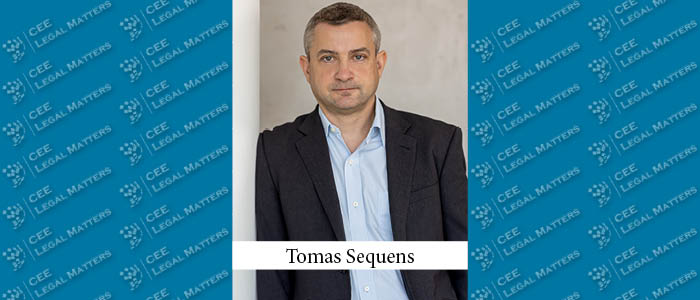The Czech Republic is struggling to implement the European SEVESO Directive into its legislation. Preventing the consequences of accidents in potentially hazardous companies, such as chemical plants, is thus in a state of emergency. After previous half-hearted solutions, however, the amendment that is being prepared by the Ministry of the Environment offers new hope.
A few definitions upfront. Prevention refers to a set of measures designed to prevent the occurrence of an undesirable phenomenon and reduce the likelihood of occurrence. An accident is an extraordinary, usually man-made, incident that results in fatal or bodily injury and damage to property and the environment. Implementation of EU law is the process of transposing EU legislation into the national legislation of EU Member States. A problem in the implementation of EU law is a situation where a particular European legal regulation is implemented "imperfectly" or even not at all.
EU Legislation vs. Czech Legislation I.
In the field of major accident prevention, Directive 2012/18/EU on the control of major accident hazards exists at the EU level. In simple terms, the purpose of the Directive is to establish a comprehensive system of preventative measures for the development and, in particular, the operation of potentially hazardous facilities, such as chemical plants. These measures limit the impact of potential accidents on human life and health and on the environment. The Directive is called the SEVESO Directive, after the notorious accident at an herbicide and pesticide factory in the Italian town of Seveso.
In the Czech legal system, this issue is currently regulated by Act No. 224/2015 Coll., the Major Accident Prevention Act. The Act is not very well known among the general public, and if it is, it is mainly with regard to the so-called emergency planning zones that are established under the Act in the vicinity of the largest companies where hazardous chemicals or mixtures are handled. For the sake of simplicity, let us call these facilities, which the Czech law refers to as “objkekty” (facilities), SEVESOs. The Major Accident Prevention Act is the implementing act that transposes the SEVESO Directive into Czech law.
Both the SEVESO Directive and the Major Accident Prevention Act regulate the obligations of SEVESO operators very strictly. In addition, Article 13 of the SEVESO Directive sets forth that to duly implement the Directive’s objectives it is important to cover the development and operation of various construction projects which are not carried out by SEVESO operators and which are not related to the operation of SEVESOs, but are located (for various strategic or economic reasons) in the vicinity of SEVESOs. These projects can fundamentally change the situation in the area, whether it concerns the number of people present, the logistical situation of the area, and other relationships that logically translate into the scope and complexity of dealing with the issue of major accident prevention.
If you ask where and how this important part of the SEVESO Directive has been incorporated into the Major Accident Prevention Act, the answer is simple – nowhere and in no way for some time. The Major Accident Prevention Act did indeed address how to locate new facilities and how to maintain mutual distances between facilities and residential areas; however, the regulation of the placement of "non-facilities" in the vicinity of SEVESOs was somehow left out of the legislative solution.
In practice, it was common for the construction of a logistics centre or a kindergarten to be planned in the immediate vicinity of a SEVESO (for example, within sight of ammonia tanks), even though it was obvious that the location was more than inappropriate (to put it bluntly) from the point of view of safety. Moreover, the Czech authorities repeated with Austro-Hungarian pedantry that they had no competence to deal with such situations and that it was therefore up to the SEVESO operators to adapt their emergency and safety plans to the new situation themselves and at their own expense. Construction plans for “non-facilities” in the area of the emergency zones were thus often permitted without giving the SEVESO operators concerned, who were usually not even parties to the proceedings question, the opportunity to influence their development in any relevant way.
EU Legislation vs. Czech Legislation II.
The unfortunate situation described above was the reason why the Major Accident Prevention Act was amended simultaneously with the adoption of the new Construction Act, which, as of 1 July 2024 (and as of 1 January 2024 in the case of so-called reserved buildings) provides for the following:
The regional authority shall issue a binding opinion which will serve as a basis for issuing decisions in project permit proceedings and in building demolition proceedings under the Construction Act, if the implementation of a new development project that is situated within the reach of the emergency events specified in the relevant risk assessment of a major accident of a building classified in Group A or Group B may cause or increase the risk of a major accident or worsen the consequences thereof and it is not a simple construction under the Construction Act; in its binding opinion, the regional authority shall lay down the conditions for the location and execution of the new construction project, as well as for putting it into trial operation or use in the event that trial operation is not carried out.
Theoretically, the amendment to the Major Accident Prevention Act provided the regional authorities with the missing power to assess (from the point of view of serious accidents prevention) construction projects that were located in the vicinity of SEVESOs; however, the wording opened up a number of interpretative ambiguities. For example, it was not entirely clear how to interpret the phrase "the reach of emergency events" and whether it was synonymous with the phrase "the reach of the selected limit values of the effects of the identified major accident scenarios" contained in implementing Decree No. 227/2015 Coll. It was not even clear how the reach of emergency events/the reach of limits chosen should be determined in real life.
Methodological Guideline of the Ministry of the Environment vs. Another Amendment?
Even before the amendment to the Major Accident Prevention Act came into force, the Ministry of the Environment began to prepare a methodological guideline that would solve the interpretation problems and set out recommendations that the regional authorities could follow.
The concept was based on the premise that the developers of projects located in the vicinity of SEVESOs should enter into negotiations with the operators of the affected SEVESOs when preparing their projects and that they should have change analyses (risk assessments) prepared together, which would show whether and how the safety situation will change with the development of the new project in the vicinity. The existence of a subsequent agreement between the operator of the affected SEVESO and the new developer on how to address the new project’s impact on the prevention of major accidents in the area should then be one of the determining factors for obtaining a consent opinion from the competent regional authority, which would form one of the necessary bases for obtaining the permit for the project.
Although a draft of the methodological guideline was completed, in the end it was not issued, as it turned out that the implementation of the SEVESO Directive was weak in a number of other points that could not be solved through the methodological guideline. Currently, the Ministry of the Environment is preparing an amending legal text that should resolve these shortcomings.
There is a good chance that the new legislation will address all the topics that have long been discussed among SEVESO operators and the professional public in this area. These include not only the clarification of the powers of the regional authorities in issuing the binding opinions in question, but also the enshrinement of the statutory participation of SEVESOs in the construction proceedings relating to projects located in the vicinity of SEVESOs and the reflection of the existence of emergency planning zones in the relevant zoning-planning documentation.
We can only hope that the new legislation will be prepared and adopted as quickly as possible, ideally during this parliamentary term, as the current situation, where the permitting of development projects in the vicinity of SEVESOs is not duly assessed from the point of view of major accident prevention, can be described – without any exaggeration – as an emergency.
By Tomas Sequens, Partner, Kocian Solc Balastik




